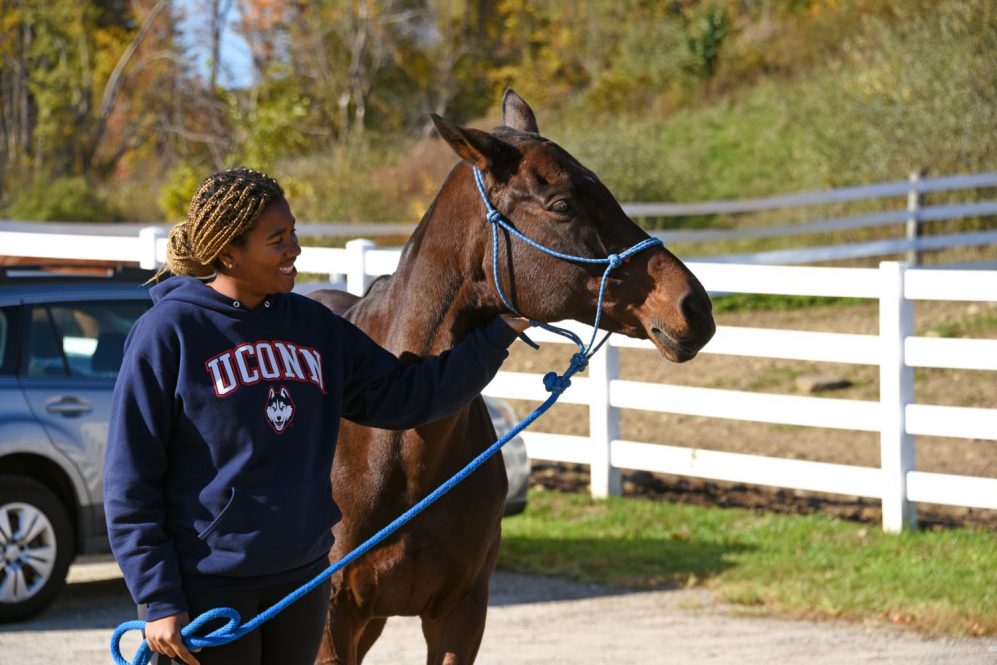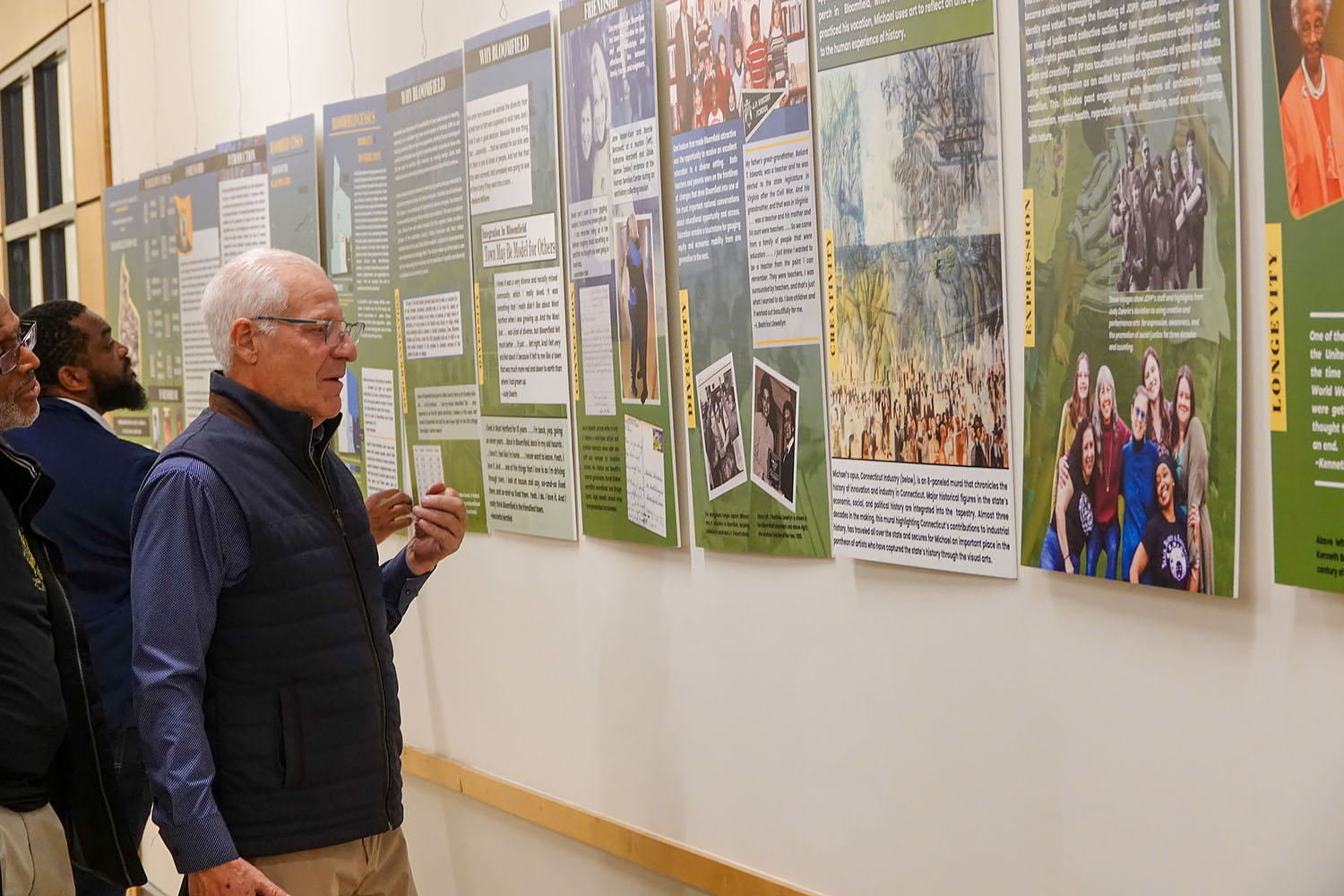The right pair of shoes can make all the difference. This is as true for horses as it is for people, according to new research from animal scientists and engineers from UConn.
Sarah Reed, associate professor of animal science in the College of Agriculture, Health and Natural Resources, recently published a paper investigating how shoeing previously barefoot horses impacts the quality of their gait.
This research originated from an observation made by Katelyn Panos, the farrier for UConn’s own horses. A farrier is a craftsman responsible for trimming and shoeing a horse’s hooves. Panos told Reed she had noticed a curious pattern. In her work, Panos noted that horses shod with plain stamp shoes, rather than fullered shoes, had better movement.
Fullered horseshoes are the standard for most horses. They have a groove (the fullering) surrounding the nail holes. Plain stamp shoes do not have a groove and have only nail holes. Dirt and footing can fill the groove in fullered shoes, which may increase traction compared with plain stamp shoes. The researchers hypothesized shoeing with plain stamp shoes would decrease concussion on the horse’s legs and improve gait quality over time.
Reed and Panos wanted to see if there would be a measurable difference in the quality of movement between horses shod with each shoe type.
When the COVID-19 pandemic hit, it provided a unique opportunity to investigate this question. During the first months of the pandemic, the horses were no longer working and were put out to pasture barefoot. When they came back into work, they needed to be reshod.
“We had this opportunity to take a group of horses that had all been managed the same way for a year and try some of these things,” Reed says.
Reed’s team took a baseline measurement of the 14 horses in UConn’s riding program which included a lameness score and inertial motion sensor measurements on the symmetry of each horse’s gait. Reed also collaborated with Kristin Morgan, UConn assistant professor of biomedical engineering, to measure hock – the middle joint of a horse’s rear legs – angles and range of motion using video technology.
The researchers then put half of the horses in plain stamp shoes and half in fullered shoes on their hind hooves for two shoeing cycles of six weeks each. The front hooves all had fullered shoes.
“We were concerned with the back legs because that’s where all the power and impulsion comes from and that’s often where we see lameness in performance horses,” Reed says. “So anything we can do to support the hindlegs could be really beneficial.”
While the researchers did not see a difference in any of the measures between shoe types, there was a significant improvement in maximum hock angles and lameness scores once the horses were shod.
The increase in maximum hock angles helps improve overall gait quality, Reed explains.
“The more movement a horse has in the hock, the more it can pick up that hock and minimize that angle, and the more it can stretch that out,” Reed says. “That allows for more push off from the ground which can mean more power, a longer stride, and more range of motion in the stride itself. Those things potentially improve the athletic performance of the horse.”
Shoeing horses changes how their foot interacts with the ground. Like with humans, the shoes provide better grip with the ground and limit how much the foot slides. This allows the horse to push off the ground more easily and have a better quality of movement.
Next, Reed wants to use a pressure mat to measure how much slide each shoe type provides on various surfaces as well as other shoe types.
“What we measured in this study was really important for lameness outcomes and quality of movement outcomes,” Reed says. “Next I think we need to look at the interaction of the foot with the shoe on and the ground surface and how that interaction changes.”
While the results were not surprising, Reed says doing this kind of research is important, as there is generally very little scientific literature on common horse management practices.
“With horses, and with any animal, we’re asking them to do things they might not naturally do, and so I think we owe it to them to do the best we can for them,” Reed says.
This work relates to CAHNR’s Strategic Vision area focused on Enhancing Health and Well-Being Locally, Nationally, and Globally.
Follow UConn CAHNR on social media



